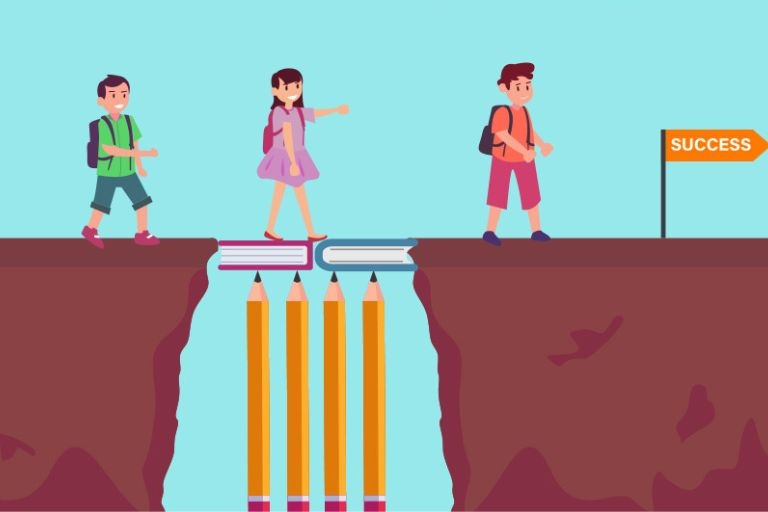
Education for All: Bridging the Gap to Ensure Equal Opportunities

Education for All: Bridging the Gap to Ensure Equal Opportunities
Education is a fundamental right, a cornerstone of personal development, and a catalyst for social progress. It has the power to break the chains of ignorance and poverty, opening doors to limitless opportunities. However, despite its undeniable importance, the world continues to grapple with disparities in access to quality education. Bridging the gap to ensure equal opportunities for all remains a global challenge that demands urgent attention.
The State of Education Disparities
Education disparities exist on multiple fronts, including geography, socioeconomic status, gender, and disability. In many parts of the world, particularly in low-income countries, children lack access to even the most basic educational resources. The quality of education often varies widely, with some students receiving an excellent education while others struggle with overcrowded classrooms, outdated materials, and undertrained teachers.
Geographical Disparities
Geographical disparities are one of the most glaring issues in education. Rural and remote areas, often characterized by limited infrastructure and resources, face immense challenges in providing quality education. Students in these regions may have to walk long distances to reach school, study in poorly equipped classrooms, and contend with inadequate teaching staff.
Socioeconomic Disparities
Socioeconomic disparities play a significant role in determining the educational outcomes of individuals. Children from affluent families have access to better schools, educational materials, and extracurricular activities. On the other hand, those from low-income backgrounds often face financial barriers that hinder their educational advancement. The cost of tuition, books, and school supplies can become insurmountable obstacles.
Gender Disparities
Gender disparities persist in many parts of the world, with girls often experiencing reduced access to education compared to boys. Deep-rooted cultural norms and prejudices can prevent girls from attending school or completing their education. Empowering girls with education is not only a matter of justice but also a catalyst for societal transformation.
Disparities Related to Disability
Persons with disabilities are another marginalized group facing education disparities. They encounter physical barriers in accessing school buildings, lack of specialized teaching resources, and social stigmatization. Inclusive education, which accommodates the needs of all students, is essential to ensure that individuals with disabilities can access quality education.
The Importance of Education for All
Access to education is not just a matter of personal development; it is the linchpin of progress and development for societies as a whole. Education equips individuals with the knowledge and skills needed to contribute to their communities and economies. It fosters critical thinking, problem-solving abilities, and creativity. Moreover, education is a key driver of social mobility, enabling individuals to break free from the cycle of poverty.
The Role of Governments and Organizations
Bridging the gap in education disparities requires a concerted effort from governments, civil society organizations, and the private sector. Here are some strategies and initiatives that can help ensure education for all:
- Investment in Infrastructure: Governments should invest in building and maintaining educational infrastructure, particularly in underserved areas. This includes constructing schools, providing transportation options, and ensuring access to clean water and sanitation facilities.
- Scholarships and Financial Aid: To address socioeconomic disparities, governments and organizations can offer scholarships and financial aid programs to students from disadvantaged backgrounds. This helps alleviate the financial burden of education.
- Teacher Training: Ensuring that teachers are well-trained and motivated is crucial. Professional development programs can enhance the quality of teaching, particularly in remote and marginalized areas.
- Inclusive Education: Implementing inclusive education policies is essential to address disparities related to disability. Schools should be accessible to all students, and teachers should receive training in inclusive teaching methods.
- Awareness Campaigns: Raising awareness about the importance of education, particularly for girls and children with disabilities, can help shift societal norms and attitudes.
- Technology and Online Learning: Leveraging technology can extend educational opportunities to remote and underserved areas. Online learning platforms can provide access to quality education resources.
- Public-Private Partnerships: Collaboration between governments and private sector organizations can help mobilize resources and expertise to address education disparities effectively.
- Monitoring and Evaluation: Rigorous monitoring and evaluation of education programs are crucial to ensure that resources are allocated efficiently and that progress is being made toward bridging the gap.
Conclusion
Education for all is not just a lofty aspiration; it is a moral imperative and a practical necessity. Bridging the gap in education disparities is a complex and multifaceted challenge, but it is one that must be addressed with urgency. When we ensure equal access to quality education, we empower individuals, strengthen communities, and drive economic growth. Education is the key that unlocks the doors to a brighter and more equitable future for all. Geetanjali Care, a non-government and non-profit organization leaves no stone unturned when it comes to helping people in need.
